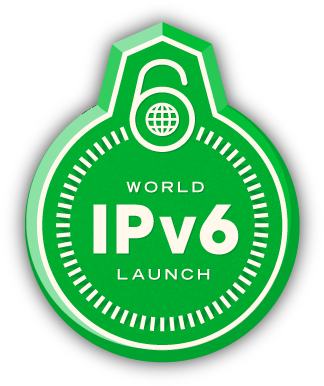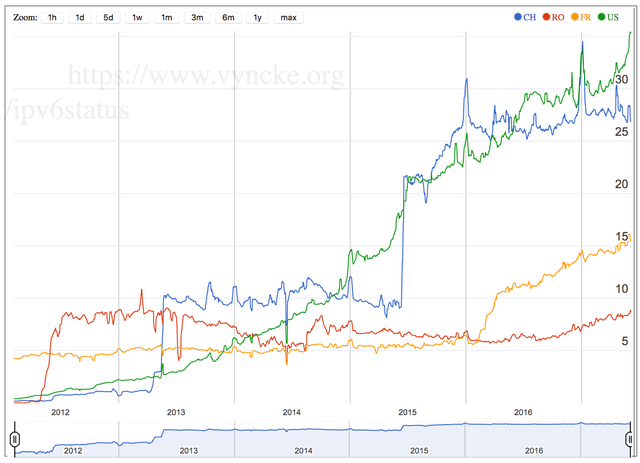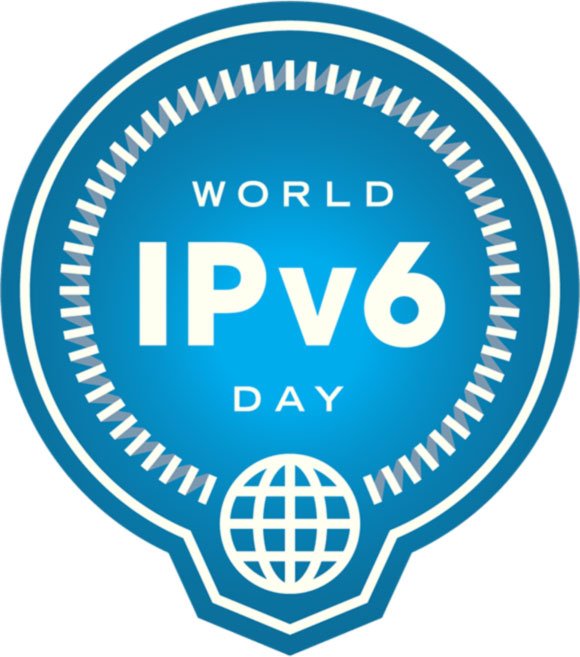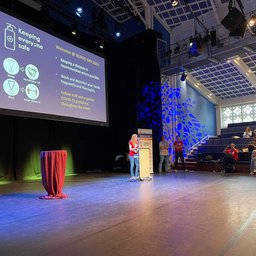Time flies, especially when you are having fun. This week, we are celebrating the 6th anniversary of the World IPv6 Day in 2011, which was held on the 8th of June.
Many operators around the world worked together to make their website accessible over IPv6 for 24 hours. Over 1,000 websites participated in this day, which was initiated by Google, Facebook, Yahoo, Akamai and Limelight Networks. The goal of the day was to have a 24-hour “test-drive” so see what problems would arise from running a dual-stacked website.
I still remember the day very well. The RIPE NCC teamed up with several Dutch research and ICT organisations (University of Amsterdam, University of Applied Sciences, Amsterdam, Surfnet, NLnet Labs, AMS-IX, Internet Society Netherlands, the Dutch IPv6 Task Force and others) and organised a full-day event with presentations, workshops, tutorials and an interoperability lab.
We were all very eager to see the results of that day, as we didn’t really know what to expect. In the following weeks, many operators shared their experiences and to the surprise of many, there wasn’t much to s
Shortly after World IPv6 Day, it was agreed that a follow-up event was needed. And this time the idea was to switch on IPv6 for good: World IPv6 Launch was born. On 6 June 2012 many websites turned IPv6 on and didn’t switch it off.
Looking back at the last 6 years, a lot has changed in our region with regards to IPv6. The RIPE region always had countries leading the adoption of IPv6.
In 2011, France was number one in the world, with the highest IPv6 adoption rate. According to a study from Google, France was responsible for more than half of the IPv6 traffic world-wide. This was mostly because French ISP Free introduced a transitioning mechanism called 6RD, that tunnelled their customers IPv6 traffic over IPv4.
In May 2012, a new country appeared on the top of the list. This time it was Romania leading the IPv6 adoption numbers. According to Google's statistics, 7.52% of all the Google users in Romania were using the website over IPv6. In 2012, this was a significant percentage. This happened, because the provider RCS/RDS started rolling out IPv6 to their customers. This time, it was native IPv6 traffic, with no transitioning mechanism used. At RIPE 65, RCS/RDS presented about their IPv6 deployment.
A year later, in 2013, the number one position went to Switzerland, because Swisscom did a big rollout of IPv6. On the graph below Eric Vyncke clearly shows the effect of a big ISP deploying IPv6 (see the blue line):

IPv6 deployment in Switzerland, Romania, France and the US
After 2013, there was a big uptake in IPv6 deployments. Often, these success stories were shared in national IPv6 taskforce meetings. Greece had a very active Hellenic IPv6 taskforce, which was transformed to GRNOG, after the main ISPs deployed IPv6. Other examples of very active and successful IPv6 task forces are Belgium and the United Kingdom.
According to Akamai’s IPv6 statistics, 6 of the 10 leading IPv6 countries are in the RIPE NCC service region and 11 countries in our region have over 10% of IPv6 traffic today. Of course, we are not there yet but we definitely have come a long way in the last 6 years. I’m very interested to hear your memories of the World IPv6 Day in 2011!





Comments 0
The comments section is closed for articles published more than a year ago. If you'd like to inform us of any issues, please contact us.